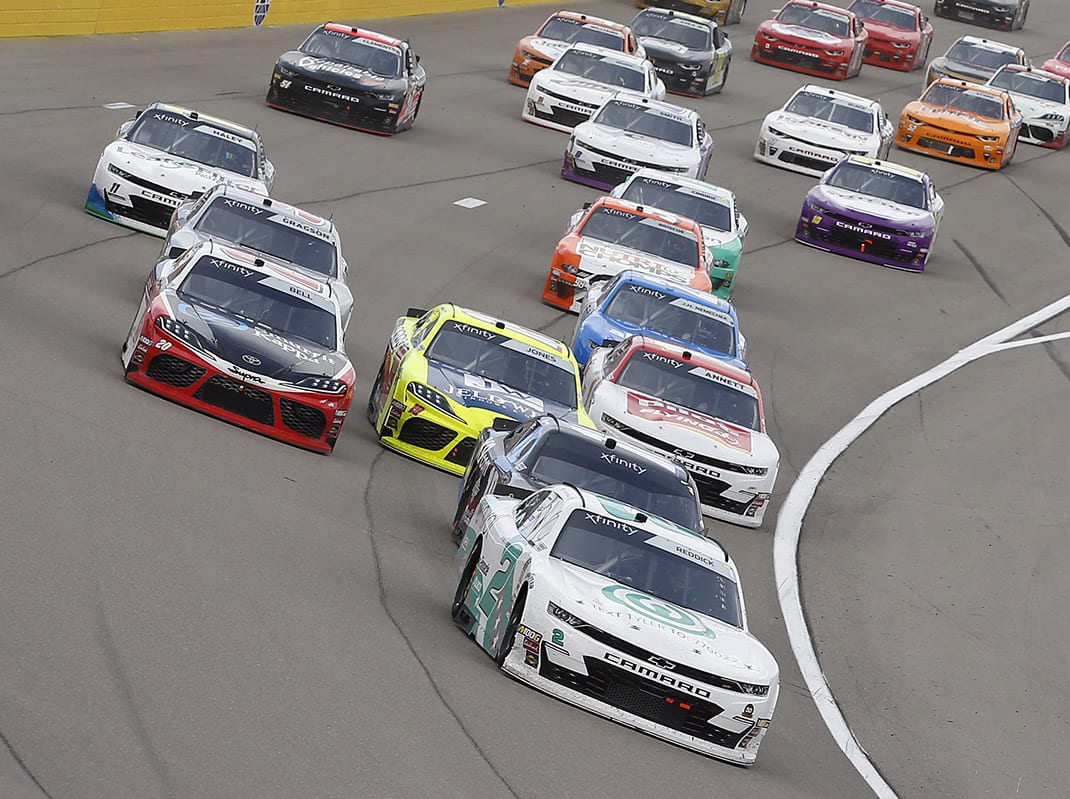For years, the NASCAR Xfinity Series has been the subject of more speculation than the disappearance of Amelia Earhart. What is its place in the firmament of NASCAR? Who will drive in it and, more importantly, own the teams?
When NASCAR’s top support series got its start way back in 1950, as a complement to the strictly stock, modified and roadster series that had come from the historic meeting in Daytona Beach, Fla. in 1947, it fulfilled a specific purpose: It was a bridge series between the modified and roadster series using older cars, not the current-year machinery in the strictly stock ranks.
In 1968, it was remade into the NASCAR Late Model Sportsman series and started to race at places like Daytona Int’l Speedway, using older-model cars from the premier Grand National circuit. Not long after, it was made into a touring series, with sponsorship from Anheuser-Busch and became the NASCAR Busch Grand National Series. The introduction of smaller, compact-era cars and V-6 engines was a turning point.
Stars such as Jack Ingram, Tommy Houston and Tommy Ellis dominated the series in its touring phase, and drivers like seven-time NASCAR champion Dale Earnhardt cut their teeth in the rough-and-tumble series. Drivers in the Cup Series, like Harry Gant, Mark Martin, Earnhardt and Geoff Bodine, often raced on Saturdays to get an idea of what track conditions would be like on Sunday, and that carried the series into the future.
NASCAR’s top teams, starting with Roush Fenway Racing and including Joe Gibbs Racing, Team Penske and others, began to use the series as a testing ground for drivers and team members. The series became more like baseball’s Triple A tier. It also meant that the Cup Series drivers would win most of the races, take the lion’s share of the purses and grab all the attention.
Fast-forward to today and the NASCAR Xfinity Series is a lot different. NASCAR, recognizing its No. 2 series was in danger of losing its identity, made changes for 2018 that limited Cup Series drivers to a certain number of races and did not allow them to compete in any of the seven races that determine the championship.
Late in the season last year, NASCAR went a step farther, dictating that Cup drivers competing in NXS events would not earn playoff bonus points for the cars they were driving, which allowed the full-time NXS drivers to be more in control of their own fates behind the wheel. It also cut the number of cars in the field from 40 to 38.
The question that these changes raised is still in the process of being answered, but early returns indicate the series’ health is quite good. It could always get better, of course, depending on whom one asks.
The NXS tagline is “Names Are Made Here,” and to a large extent that is accurate. William Byron went from within a hair of winning the NASCAR Truck Series title to winning the NXS championship a year later with a different team. Tyler Reddick, last year’s NXS champion, took over Byron’s ride at JR Motorsports and promptly pulled off another title … in the same car with the same team.
Byron had some notoriety because of his season with Kyle Busch Motorsports — and the fact he was a modern-day version of Jimmie Johnson when he was coming through the ranks to stardom. Reddick had 18 races in the series, including a victory, before he went full time with JRM and ended up winning the title. This year, Reddick is racing in the series with Richard Childress Racing, eyeing a quicker route to the NASCAR Cup Series.
Christopher Bell, who won seven times last season but fell victim to Reddick’s spirited drive during the season finale at Homestead-Miami Speedway and did not win the championship, is one of the headliners in the NXS again this season.
In years past, he would have gone straight across the garage to a ride with parent team JGR, but there was no room at the inn there. JGR added Martin Truex Jr. to its stable of Cup Series contenders.
So the series is working as planned, funneling younger drivers toward the top of the heap.
What it isn’t doing, at least as well as on the driver side, is keeping the ownership base in the same boat.
It costs somewhere in the neighborhood of $5.5 million to field a top-flight NXS car for a full 33-race season. An owner can field a full-time Truck Series team for around $4 million. Those are real numbers and a team can spend as much as it wants or as much as it can, depending on the circumstances. There is no private testing allowed, but there are occasional opportunities for veteran drivers to test tires for Goodyear or for rookies to get acclimated to the series and the different types of tracks on which they’ll run.
